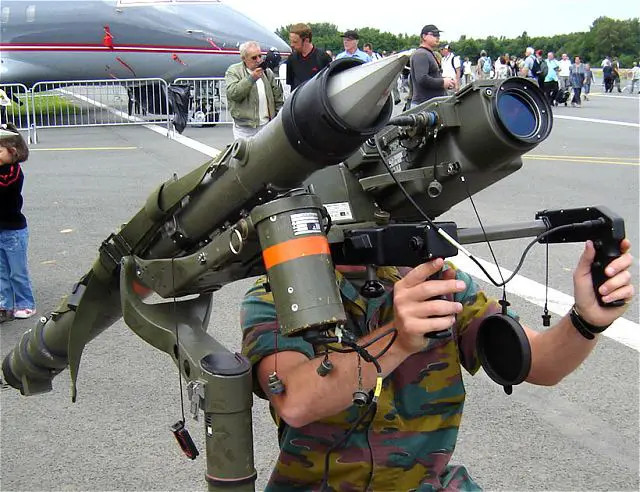| a | |||
Defence & Security News - Hungary |
|||
| Friday, August 22, 2014 08:41 AM | |||
| MBDA to upgrade Mistral air defense missile systems of Hungary with Matis optronic aiming sight. | |||
Hungary’s
defence ministry on Tuesday, August 19, 2014, signed an agreement with
MBDA France on developing the Mistral air-defence missile system in Hungary
during the period of 2016-2018. The document was signed by Colonel Tibor
Balla, deputy director general of the ministry’s defence economy
office, and Didier Philippe, MBDA’s senior deputy president in Budapest. |
|||
 Mistral short-range surface-to-air defense missile system with Matis MP3 optronic aiming sight. |
|||
The
upgraded missile systems Mistral will be fitted with Matis MP3 optronic
aiming sights. In addition to this, the Defense Ministry will acquire
new Mistral 3 missiles to bolster its air defense system.
Hungary has been operating Mistral 2 missiles since 1997. The missile launchers are mounted on Atlas vehicles, according to the Defense Ministry. The Mistral is an infrared homing surface-to-air missile designed and manufactured by the European multinational company MBDA. The Mistral system is portable by two people, one carrying the missile and one carrying the firing unit. The Mistral is a supersonic missile with a maximum speed of about Mach 2.5. It can engage aircraft out to 6 km and at altitudes of up to 3 km. Due to its speed and range the Mistral can be used against aircraft such as fighter jets. The Matis MP3 optronic aiming sight is manufactured by the French Company Safran (Sagem). This is a day/night sight that significantly enhances the Mistral missile’s capabilities. The Matis extends detection and identification ranges and offers greater operability under different weather conditions. It is also fitted with a magnetic compass and GPS receiver, to provide geographic coordinate readings of the target and enhanced coordination of firing posts within a defense area. Mistral entered series production in 1989 and is now deployed by 37 armed forces of 25 countries (eight countries in Europe, eight in the Asia-Pacific, five in South America, three in the Middle East), including Austria, Belgium, the Brazilian Marine Corps, Chile, Colombia, Cyprus, Ecuador, Estonia, Finland, France, Hungary, Indonesia, Morocco, New Zealand, Norway, Oman, Pakistan, South Korea, Singapore, Spain, and Venezuela. |
|||
MBDA to upgrade Mistral air defense missile systems of Hungary with Matis optronic aiming sight 2208
- Posted On














